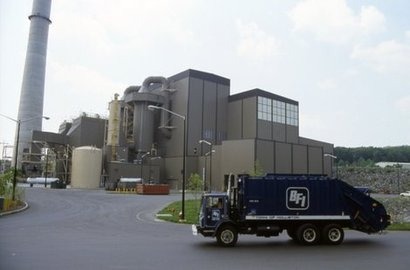
The European waste to energy (WTE) market is experiencing steady growth according to Frost & Sullivan’s Environment & Water team. The circular economy will increasingly create new growth opportunities for extracting energy from hard-to-recycle waste, largely due to the European Union (EU) 2020 renewable energy target, country-specific regulations and incentives to increase energy efficiency. As a result, waste management, modernisation of WTE plants, research and development into new WTE technologies, and public and private partnerships (PPP) are all attracting attention.
European Waste to Energy (WTE) Plant Market, Forecast to 2020, new analysis from Frost & Sullivan’s Environment & Water Growth Partnership Service programme, provides an in-depth insight into the WTE plant market in Scandinavia, Benelux, Germany, France, the United Kingdom and Alpine. The study analyses drivers, restraints and regional outlooks. It assesses the WTE aspect of municipal solid waste management and dominant incineration technologies, such as grate, gasification and fluidized bed.
“WTE plants are a key factor for quality recycling and pave the way for a circular economy that will bring in more employment opportunities, especially in semi-skilled and entry-level jobs” said Frost & Sullivan Energy & Environment Research Analyst Akshaya Gomatam Ramachandran. “To capture new opportunities, leading municipalities and corporations should develop new circular models along their supply chains, target hard-to-recycle materials within waste types to achieve the zero-waste goal, and follow the eco-effectiveness approach to generate cyclical, cradle-to-cradle material flow.”
Ramachandran added that a substantial amount of investment is needed to improve the quality of the existing WTE services and harness additional capacities and that innovative firms and small and medium enterprises should look toward PPP as a way to build strong financial support. PPP will trigger foreign direct investment and produce new-generation WTE plants that are likely to yield significant revenue.
The grate-based incineration system is set to dominate the market in terms of revenue and the number of plants installed. This is due to high maturity, robustness, flexibility and cost effectiveness. Meanwhile, demand is increasing as countries shift from coal and nuclear power to renewable energy. In Scandinavia, the number of WTE plants is expected to increase gradually through 2020, as energy consumption in that region is largely dependent on renewables.
Poland is currently considered to be one of the most attractive markets in Europe for thermal WTE technologies. About five new projects with capacity of more than 1 million tonnes per annum are in the preparation stage and are likely to enter the market.
For additional information:
European Waste to Energy (WTE) Plant Market, Forecast to 2020

